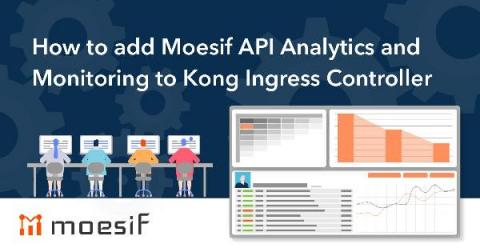Systems | Development | Analytics | API | Testing
API
A year of API-driven digital transformation
2020 was a challenging year for many organizations as they faced sudden changes in consumer behavior and market dynamics. The shift to digital channels is nothing new, and even in 2019, digital was already the preferred option for commerce and collaboration across many industries—but in the wake of the global pandemic, these channels became the first and only option for many businesses. Preference gave way to necessity almost overnight.
How Checkr Built a Hybrid API Management System With Kong Gateway
This article was written by Ivan Rylach, a staff software engineer from Checkr. Checkr is the leading technology company in the background check industry. The company was moving to a services-oriented architecture. To scale this process, we switched to a declarative configuration for API management. As the staff software engineer at Checkr, I faced more scenarios where declarative configuration was not suitable by design. This post, and the video below, will explain these cases.
An Email Marketing Campaign that Drives API Integration
One of the most effective marketing strategies is to send emails based on the behavior of the recipient. By triggering on how your customers interact with your product, you’re able to share content that’s actually aligned with what they’re doing and thus more likely to resonate. By using automated email workflows it’s possible to share über-relevant content at scale with large cohorts of customers.
SmartBear Strengthens Leadership Team with New EVP/GM of Products and Technology
2021 Predictions: 5 Technology Trends in the Year Ahead
In 2020, the acceleration of digital transformation quickly emerged as a top priority for many organizations as they grappled with the business impacts of an unexpected pandemic and raced to adapt to a new reality. As businesses begin to pivot out of the shadows of COVID-19 in 2021, what will this new reality look like? What new technology trends will emerge? Our executives shared their personal predictions for the year ahead: 1. The End User Era: Architects Will Rise in IT Purchase Power
Differences Between Kong Enterprise Edition and Kong Community Edition
How to add Moesif API Analytics and Monitoring to Kong Ingress Controller
Kong is a popular open-source API gateway to help manage your APIs. With Kong, you can handle authentication, rate limiting, data transformation, among other things from a centralized location even though you have multiple microservices. Kong is built on NGINX at it’s core, one of the most popular HTTP servers. Being open-source, Kong is very easy to deploy on-premises usually in just a few minutes without requiring the installation of many components other than a Postgres or Cassandra store.
Podcast on How to Build an API-First Company with Nick Patrick, Radar CEO
Ep. 6: Nick Patrick, CEO of Radar On today’s episode we have Nick Patrick, the CEO of API-first location platform company Radar. Nick cut his teeth in PM roles at Microsoft, Foursquare and Handy, before starting Radar in 2016. As cofounder and leader of Radar, Nick shares his experience on how to fuel growth, choose your partners, ship products faster & with confidence, and many more invaluable perspectives for professionals in the API platform ecosystem.











